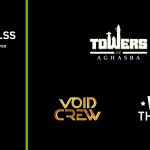For better or worse, Street Fighter V was one of the most controversial Capcom releases of the past few years. Coming off the smashing success of Street Fighter IV, which revitalized the fighting games genre as a whole, the high expectations for the next entry in the series were dashed almost instantly with a barebones launch version featuring virtually no single-player content; an offense, mix-up focused gameplay that, at times, didn’t feel like Street Fighter at all; and an online experience that still doesn’t work as it should six years after release. While the game did improve over the years, reaching its peak in the fifth and final season, many Street Fighter veterans still couldn’t warm up to the game, as the game’s signature mechanics, the V System, locked too many options behind a comeback mechanic that is quite unbalanced to this day.
Right from its official unveiling, it looked like Street Fighter 6 would address most of the criticism aimed at the previous entry. The goal is to create a fighting game that could be very enjoyable for casual players that primarily enjoy single-player content and competitive players aiming to climb the ladder and become the best. While we still do not know how good the single-player World Tour mode will be, we now have a good idea of how the game generally plays, thanks to the closed beta held between October 7th and October 10th.
The Street Fighter 6 closed beta granted access to the Battle Hub, the main online multiplayer mode that allows players to create their own avatar, access lobbies, interact with other players and enjoy online multiplayer matches. The character creator is rather extensive, with tons of options that allowed beta testers to create some really wacky characters even without access to the full range of customization options that the final game will offer.
Avatar customization is only a tiny part of what the closed beta featured, as it also offered access to lobby fights with unlimited rematching, Ranked, and Casual matches. Like in Street Fighter V, players need to pick a character and choose a control scheme between Classic and Modern before matchmaking even begins. It’s not the most intuitive system, but it makes more sense in Street Fighter 6 than in its predecessor, as there are now individual ranks for each character, so players do not have to worry about losing League Points if they want to try out a new character in Ranked matches. Thankfully, this time around, not everyone will have to start from the very bottom, as players will have to complete 10 placement matches when using an unranked character to get assigned to a League. As such, it is highly unlikely that newcomers will have to fight veterans when the full game launches, also considering the game asks players their skill level when first activating Ranked matchmaking, which determines the range of Leagues for placement matches. Having reached Super Diamond league in Street Fighter V, I picked the suggested options and was matched with players ranging from Gold to Diamond in my placement matches, where I didn’t do particularly well due to how differently Street Fighter 6 plays compared to its predecessor.
The main Street Fighter 6 mechanic is the Drive system which is regulated by a gauge located right below the health gauge at the top of the screen. Drive is used to perform not only EX moves, now called Overdrive, more powerful versions of regular special moves, but also Drive Impact, Drive Parry, Drive Rush, and Drive Reversals. These mechanics aren’t just an addition on top of the classic Street Fighter gameplay; it could be said that the game’s combat system has been designed around them. Drive Impact, for example, is a not-too-slow armored move that can absorb attacks, leave the opponent open for a full combo for a few seconds, and cause a wall splat in the corner if blocked. Since it’s not very fast, it can be countered fairly easily by another Drive Impact, a parry, or a grab. Drive Parry, on the other hand, will lead to some very intense moments, as it is possible to hold the combination of buttons to parry all attacks at the cost of Drive gauge, or press them the moment an attack connects to perform a Perfect Parry with a slow-down effect that looks great, highlighting the display of skill showed.
Drive Rush, while less flashy than the other Drive system options, is the technique players will have to master to perform extended combos and keep up the pressure on a turtling opponent, as the Street Fighter 6 frame data seems to have been built around it. Unlike Street Fighter V, where light and medium attacks were often positive on block, allowing most characters to keep up an unrelenting pressure without spending meter, in Street Fighter 6, most of these normals are negative on block. By pressing two times forward right after a cancellable attack connects, it is possible to cancel the attack and make it positive on block with Drive Rush or get more frame advantage on hit. This essentially allows players to extend their combos as long as they have Drive available or keep the pressure up and corner the opponent if they block.
Drive Rush was also the basis for mix-ups for most of the eight characters available for the closed beta (Ryu, Ken, Chun-Li, Guile, Juri, Luke, Jaime, and Kimberly), as, for example, an overhead attack performed after a Drive Rush can combo into other moves, something that is not normally possible. Drive Rush can also be activated from a Drive Parry from anywhere on the screen, making it a great option to open-up opponents with a surprise low attack, close gaps, and more. The great utility of these new maneuvers is offset by the Burnout mechanics, which leave a character unable to use Drive for a few seconds if they deplete their gauge and open to stunning if hit by a Drive Impact in the corner. Going too Drive happy against a competent opponent is a recipe for a quick and sound defeat.
Even though the Drive system feels overwhelming in the first few hours of the game, it doesn’t take too long to gain a basic understanding of it. And once these new techniques are integrated into a general gameplan, Street Fighter 6 becomes incredibly fun, as Drive Rush combos allow for great creativity, while the other defensive tools prevent matches from becoming one-sided affairs where mix-ups on wake-up and the inability to guess right determine its outcome. It will be interesting to see how mix-up heavy characters and grapples will be balanced in the final release with the Drive system and its options in place.
Speaking about characters, Street Fighter 6 does a great job of making classic fighters feel fresh without taking away their uniqueness or locking away the most powerful and fun options behind other mechanics. Ryu is still the classic shoto who can control space with fireballs, proper positioning, and anti-air attacks, but has now gained the ability to power up his Hadoken and the new move Hashogeki with a Denjin install inspired by his Street Fighter V V-Trigger I without having to spend resources. One of his Super Arts also allows for some great-looking and powerful wall bounce combos that give the character a whole new dimension. Ken, on the other hand, has received some new kick moves that further differentiate him from Ryu, and his SFV V-Skill 1 is available as a regular move that can be used to close the gap, perform unique combos, and power-up some of his attacks with flames, like his Shoryuken. Guile, Chun-Li, and Juri all had some of their previously V system exclusive tricks added to their moveset as well, making them great to play, so, in terms of character and combat design, the game is definitely on point.
Street Fighter 6 is also on point when it comes to online matches, a world apart from those of its predecessor, which were powered by a rollback netcode plagued with issues. This new entry’s experience was almost flawless, even though the game is still far from release. Being in Italy, I played smooth matches against players from the rest of Europe with no rollback, as well as matches against players from further away regions like the United Arab Emirates and even the United States, although the matches against the USA players did have a little rollback, but nothing that made the experience unplayable. I even played against a Japanese player, and the experience was not smooth, although I expected much worse. As with character and combat design, Street Fighter 6 seems to also be on point with the online experience, which features some very interesting options that players have been asking for for years, such as an option to cancel the match if the system detects it is being laggy or getting awarded League Points if the opponent ragequits. The closed beta gave the feeling of a team that cares deeply about its audience and wants to release the most feature-complete Street Fighter to date.
Back when Street Fighter 6 was revealed, I wasn’t completely sold on it, but my two days with the closed beta completely changed my opinion of the game. The colorful, hip-hop-influenced aesthetics look great in motion, although some character animations are still a little rough. Mostly, though, the new gameplay mechanics and the cast’s combat design have made my 15 hours or so with the beta a joy and have made the wait for the full game way more difficult.
Street Fighter 6 launches next year on a yet-to-be-confirmed release date on PC (Steam), PlayStation 5, PlayStation 4, Xbox Series X, and Xbox Series S worldwide.
The post Street Fighter 6 Closed Beta Hands-On Preview – Turning Over a New Leaf by Francesco De Meo appeared first on Wccftech.







